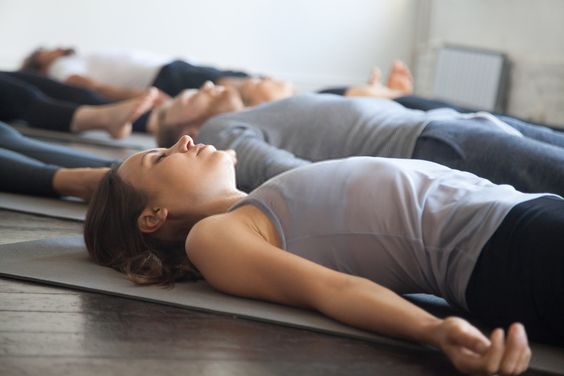
Mental health and stress are two of the top contributors to loss of sleep, and if we can’t sleep, how can we lower our stress and improve our mental health?
We can’t. It is a vicious cycle, so how can we solve this?
Yoga Yoga Yoga! Yoga has many benefits, one of its biggest benefits is lowering stress levels and improving mental health. There are all kinds of yoga one can try. However, for those who are solely concerned with loss of sleep, Yoga Nidra may be the solution for you.
Yoga Nidra is also known as yogic sleep. Yoga Nidra for sleep promotes deep relaxation and provides access to our deep unconscious mind. Yoga Nidra is not a substitute for sleep! It has some overlapping benefits but it does not have the same effects. Your brain waves adjust to which stage of sleep you are in throughout the night. Yoga Nidra practitioners maintain the effect of the “in-between” stage of sleep or “light sleep” has on our brain. This brain wave is called a theta wave; Stage 2 NREM sleep in humans, and the drowsy state before sleep.
Yoga Nidra for sleep can be a quick way to refresh the brain and upon consistent practice can help you sleep. 45 minutes of Yoga Nidra has been claimed to be equivalent to 3 hours of normal sleep!
Yoga Nidra is no ordinary form of yoga. It is a slow and calming process that piggybacks on sleep. Sleep is a natural process of rest and refreshment for humans. Ancient yogis started building the steps behind a Yoga Nidra flow in order to lose attachment to one’s thoughts. Yoga Nidra changes our thinking patterns; it allows a release of attachment tools thinking patterns and creates patterns for new thoughts. Oftentimes old patterns of thought result in “rumination thinking” or in other words, continually thinking about the same thoughts exhausts one’s mental state whilst dismissing the ability to relax, and the inability to relax directly inhibits one’s ability to sleep.
Yoga Nidra consists of a guided mediation provided directly from an instructor or recorded and then played by the practitioner. There are five phases an instructor takes you throughout the process of their guided meditation.
5 Phases of Yoga Nidra:
1. Readying Yourself – Laying down on your mat or setting up in a comfortable space, slowing your breath, and closing your eyes.
2. Focus on Breath – Consciously change your pace of breath by slowing it down, expanding your stomach when breathing in, and counting breaths.
3. Focus on Body – Take notice of the sensation of your body parts, ask yourself is this body part tight or loose? What part of the ground is it touching? This raises awareness and changes rumination thinking
4. Progressive Muscle relaxation – Feel the weight of each body part and release. This does not mean tightening and loosening one’s body parts. It means to let go of the attachment of feeling to that body part or muscle
5. Visualization – Imagine a comfortable or familiar setting, laying on the beach, feeling the sand, feeling the wind, ask yourself what does the sky look like? Is it windy? What color is the water?
These phases are designed to lower the intensity of one’s mindstate and descend into a deep state of relaxation while staying mildly awake. A common way an instructor will direct a practitioner to this state is asking the practitioner to focus on parts of the body. This allows rumination thinking to begin to subside as the practitioner is focused on visualizing and consciously noting what their body feels. Ahana wellness mentions that this specific phase in the process “Brings awareness to the body in this methodical manner helps practitioners feel the full weight of their bodies and sync their mental and emotional state with their physical presence. The result is an intensely deep relaxation”. Once this phase has finished the practitioner is capable of deeper visualization. Instructors guiding visions of relaxing visions are very common, visualization of colors, relaxing settings, and one’s whole body being refreshed or cleansed are three of the most common ways to achieve the ultimate goal of deep relaxation upon completion of Yoga Nidra.
